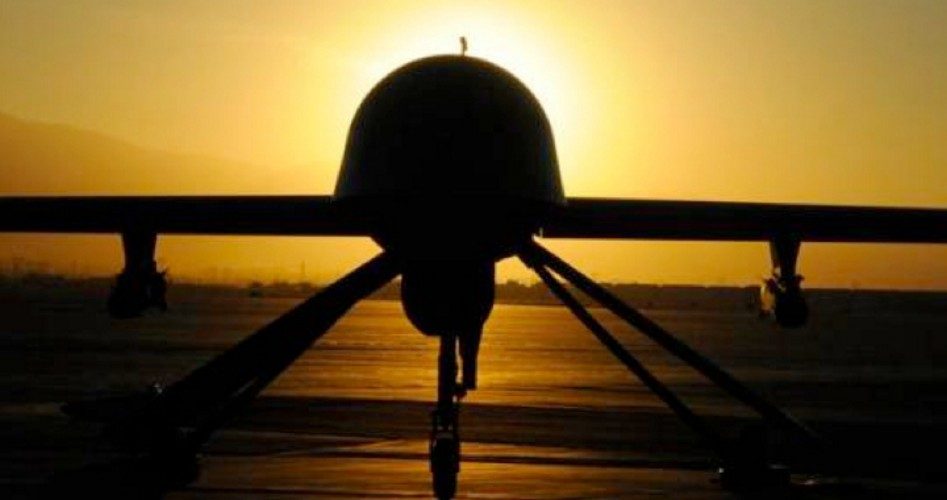
The New York Times reported last week that the Defense Department plans to build a drone base in northwest Africa to enable it keep a closer eye on African organizations believed to be associated with the larger al-Qaeda network.
U.S. intelligence officials insist that the threat from regional al-Qaeda branches is growing and believe that more frequent surveillance can reduce the danger.
The move, the Times reports, is “an indication of the priority Africa has become in American antiterrorism efforts.” The story notes that the current U.S. military presence is mostly confined to one permanent base in Djibouti.
Beyond the official base, the United States maintains a “constellation of small airstrips” in the area that are used to launch drones tasked with tracking the movements of suspected “militants.”
It is reported that should the new base get the green light from Congress, Niger is the likely location for it.
The proximity of Niger to Mali cannot be overlooked. As The New American has reported, President Obama has once again sidestepped the Constitution and Congress and committed the United States to supporting the United Nation’s war on rebels in Mali. The armed forces of the socialist government of France are taking the lead in the combat operations in Mali.
Secretary of Defense Leon Panetta backed his boss’s drive to bolster the U.S. presence in that conflict. He told reporters that the Obama administration was preparing to provide air support and logistics information to the French military. At that same press conference, Secretary Panetta insisted that “at this time” there was no plan to deploy U.S. ground forces to Mali, but that the president would continue offering whatever level of support the war effort required.
An official quoted in the New York Times story confirms the connection between Mali and the proposed air base. “This is directly related to the Mali mission, but it could also give Africom [the United States Africa Command] a more enduring presence for I.S.R. [intelligence, surveillance, and reconnaissance],” the American official told the Times.
The military officials cited in the story estimate that “as many as 300 United States military and contractor personnel” would be stationed at the new African air base.
Not everyone in Africa would welcome the increased U.S. presence in the region. As reported by the New York Times,
Some Africa specialists expressed concern that setting up a drone base in Niger or in a neighboring country, even if only to fly surveillance missions, could alienate local people who may associate the distinctive aircraft with deadly attacks in Pakistan, Somalia and Yemen.
When locals otherwise uninvolved in any terroristic activity turn to violent counter-attacks as revenge for the killings by drones piloted by the U.S. military or the CIA, that is known as blowback — and it is creating more enemies in Pakistan and Yemen than U.S. drones are able to kill.
After a drone attack killed 13 Yemenis by “mistake” in September 2012, for example, relatives of those killed spoke with the clarity and carelessness that comes from the mixture of mourning and rage.
“You want us to stay quiet while our wives and brothers are being killed for no reason. This attack is the real terrorism,” declared Mansoor al-Maweri, whom CNN reported as being “near the scene of the strike.”
Reuters explains that “Western diplomats in Sanaa say al Qaeda is a threat to Yemen and the rest of the world.” An argument can be made that a bigger threat to the world is the United States’ daily drone attacks that destroy our own dedication to the rule of law and serve as an effective recruiting tool for those seeking revenge for the killings.
Should the plans to build a new U.S. air base come to fruition, Africa might soon be added to the list of countries where anti-American sentiment is bred by blowback.
The Obama administration’s goal of growing the U.S. military presence in Africa is not new, however.
In October 2012, the Washington Post reported that the CIA was leaning on President Obama to green light the expansion of the intelligence agency’s fleet of drones. The increasing militarization of the CIA has accelerated its “decade-long transformation into a paramilitary force” according to a government official quoted in the Post article.
Former CIA Director David Petraeus (a member of the internationalist Council on Foreign Relations) told the president that a beefed up drone presence would help his agents keep up with the “threats in North Africa,” a region the government insists is attracting al-Qaeda militants fleeing from the constant barrage of Hellfire missiles fired from drones patrolling the skies over Pakistan and Yemen.
And, it’s not as if North Africa hasn’t already seen its share of drone sorties. On July 24, 2012, the Washington Post published an article describing the congestion of the skies over Somalia caused by drone traffic. The situation is so bad, said the paper, that there is a “danger to air traffic” in the area.
An additional problem posed by the proliferation of the unmanned aircraft above the east African nation is that their presence might be evidence of a violation of a 1992 United Nations Security Council arms embargo still in effect.
The article in the Post cited a UN report in which officials of the international body recount several instances where collisions between drones and commercial aircraft or objects on the ground were “narrowly averted.” One such incident involved a drone and a passenger plane flying above Mogadishu, the capital of Somalia.
The authors of the report of the investigation did not directly implicate the United States. That said, the report indicated that “at least two of the unmanned aircraft appeared to be U.S.-manufactured and suggested that Washington has been less than forthcoming about its drone operations in Somalia.”
According to the report, there have been 64 unauthorized drone deployments, fighter jet missions, or attack helicopter flights recorded in Somalia since June 2011. At least 10 of the documented flights involved drones.
While the U.S. military keeps mum about its use of drones around the world, it is known that the aircraft are deployed and launched from the base in Djibouti, as well as from airstrips in the Seychelles and Ethiopia. The base proposed for construction in north Africa would undoubtedly result in an exponential ramp-up in the number of drone missions flown in the region.
In a statement released in last summer, the Pentagon admitted that it is “engaged in a robust range of operations to target Al-Qaeda and associated forces, including in Somalia.” In 2011, the military acknowledged that as part of that operation, a drone strike was launched against two suspected leaders of al-Shabaab, an alleged al-Qaeda affiliate based in Somalia. Again, the use of these drones and the firing of missiles at militants seemingly violates the 1992 embargo, as drones carrying Hellfire missiles are inarguably deployed for uses that are “exclusively military,” in direct contravention of the terms of the embargo.
While the leaders of al-Shabaab, al-Qaeda, and other suspected militant groups will undoubtedly be the target of the drones launched from a new African air base, the experience of use of the unmanned aerial vehicles in Pakistan, Afghanistan, and Yemen casts serious doubt on the ability of these future sorties to eliminate the alleged threat posed by these alleged terrorists.
Related Article:
Without Congress, Obama Administration Joins War in Mali
Drone War Creating More Enemies Than it Destroys
Photo of Predator drone: U.S. Air Force
Joe A. Wolverton, II, J.D. is a correspondent for The New American and travels frequently nationwide speaking on topics of nullification, the NDAA, and the surveillance state. He can be reached at [email protected]


